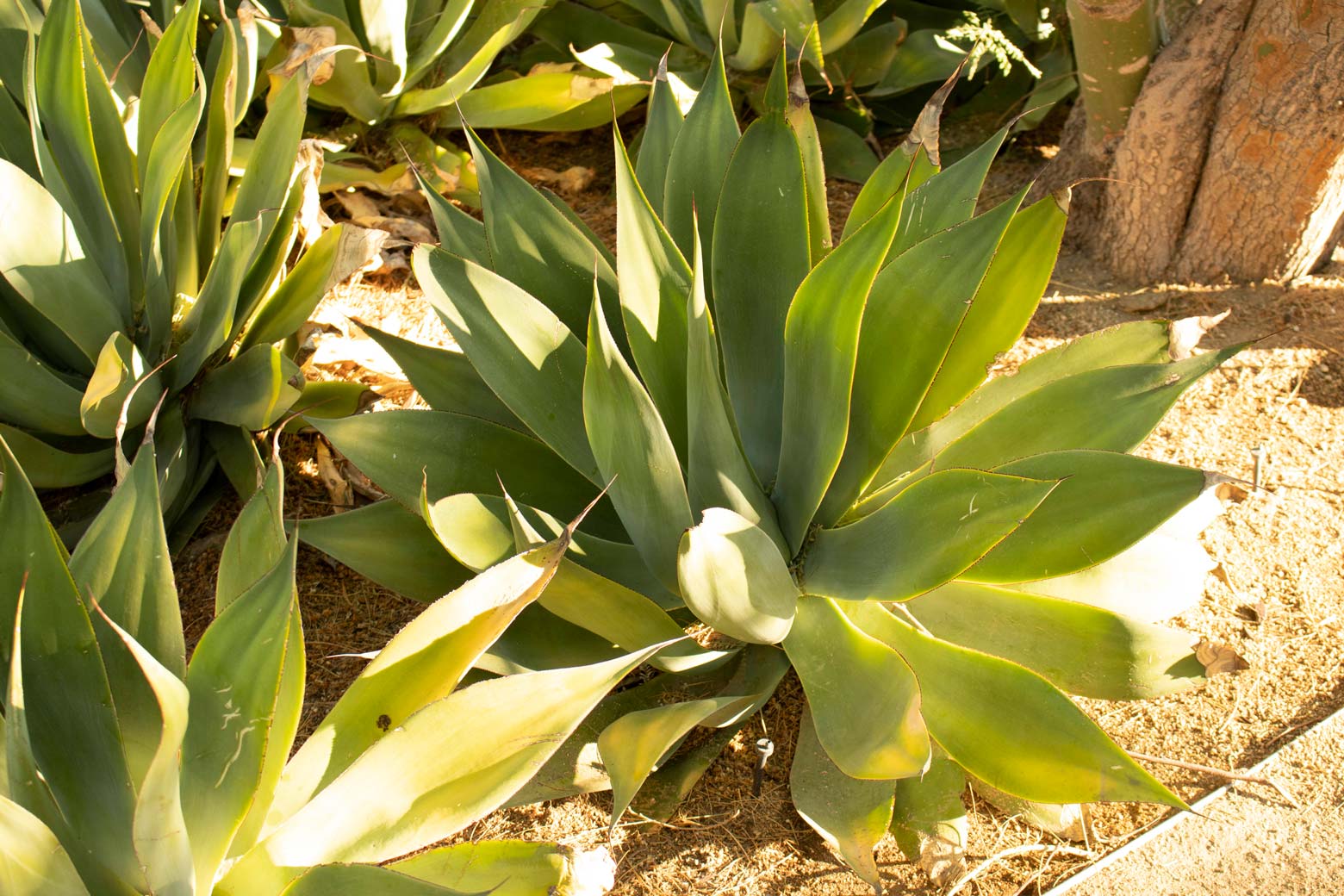Fox-tail is found throughout the west side of the gardens in planters around the Great Lawn. It grows on a curving stem that can reach up to five feet with additional rosettes forming and rising around its base. This makes it a unique addition as it can add height to garden spaces. The leaves are very soft with smooth margins, though occasionally they may grow small, serrated teeth. They can grow in color ranges from pale green to blue-green.
The inflorescence (blooming stem) has a distinctive curve that grows up, and then bends down and then up again. The curving pattern is where it derives its name, as it resembles a foxtail. The blooms pack densely along the stem and bloom a pale green between December and January. Collection of seed and offsets are the most common cultivation method.
Distribution in Mexico is at higher rocky ranges around 6,000 feet. Fox-tail is considered rare outside of cultivation. There are few locations where it currently grows. According to Mary Irish, it was first described from cultivars grown in Europe that were collected in the 1850s from an unknown location in Mexico.
Care should be taken as Fox-tail can be lost to frost. On temperate coasts, it can do well in the sun, but not in the hotter desert regions where it may be too much.







